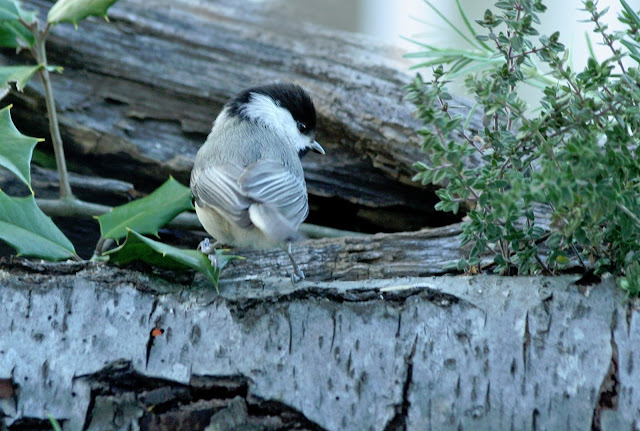Those of us who are photographers know that what is shown in a photograph is not always what was seen by the photographer. Some purist photographers feel that any tweaking, other than the kind of light adjustment that was made in a darkroom many years ago, is invalid in the world of photography. I tend to be liberal (as I am in everything else) regarding hard and fast rules in any kind of art, and digital photography opens up lots of opportunity for tweaking. My rule is that you need to be
honest in your work. Therefore, I am going to give you a few clues that may help you if you are trying to get backyard bird photos or if you wonder about some of mine.
1. You do need a good camera and a telephoto is almost a necessity unless your birds are very tame with your presence and not afraid of the clicking sound.
2. You can shoot in automatic. But if you have a nicer camera you should set your camera on aperture priority. If it is too close to dusk you will need to up your ISO.
3. If the auto mode is what you are most comfortable with, you can try to use the "sports" mode that many cameras have.
OK enough technical stuff for those of us who do not make our living at this.
The next thing to do is set up the scenery. Use a stool or backyard table and get it as close to your blind (where you hide and shoot) as you can. Decorate this table with natural stuff. The photo below is where my blog post title came from:
We lost a lovely birch tree last winter and I love the bark texture on this tree. I picked some rosemary and some thyme and cut a holly branch for a quick set-up. We have not talked about light which is the MOST important aspect of photography for me, and as you can see, I try to set this so that light came across giving interesting shadows in the early morning.
You can select berries or parts of plants. Whatever works. Then you add some bird food. In the photo above you can see the wren has found the sunflower seed and scattered it all over as he opened the shells.
Then the object becomes the need to hide all the unnatural stuff. I will have to camouflage the deck fence in back and make sure the clip on the table cloth in the lower right hand corner of this photo above does not show. Of course, it is not all that easy because you do not have control over the most important aspect...the moving animal.
I caught the bird, but her head is buried in the seeds that I tucked away.
Above I caught her head but the framing is way off. Not sure what the subject of this photo above is supposed to be.
Getting the back of the bird is certainly not interesting but having him blurred as well means this photo is a delete.
Much of the time, no matter how much coffee you have, you will miss the bird entirely. Chickadees are notorious for fleeing from the scene just as my shutter comes open.
But eventually you get a bird in the shot, in focus, and with reasonable light. If you crop closely it looks as though he is in the woods. None of this information is news to photographers and most of it can be found on the internet in far greater detail in photography blogs. But I thought I would share my process for any reader who would be interested. (Click on the photo for a close-up.)







































